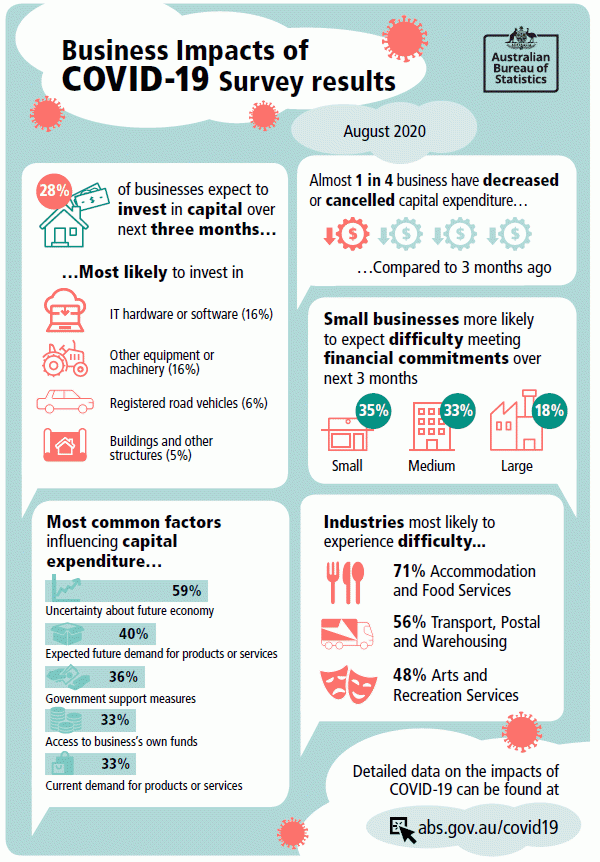This publication provides information on the incidence and nature of impacts due to COVID-19, as experienced by businesses operating in Australia.
Topics covered in this release include:
- Business revenue, operating expenses and employment
- Business ability to meet financial commitments
- Business capital expenditure
The collection was conducted through a telephone survey between 12 August and 19 August 2020. The sample size was 2,000 businesses and the final response rate was 60% (1,202 responding businesses).
This release forms part of the suite of additional products that the ABS is producing to measure the impact of COVID-19. Future information collected in this survey will evolve to maintain relevance in a changing environment.
